Shevlin Sebastian's Blog, page 78
February 8, 2017
Stretching The Muscles.......
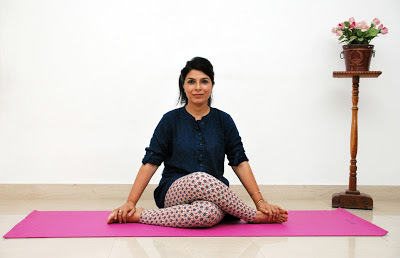
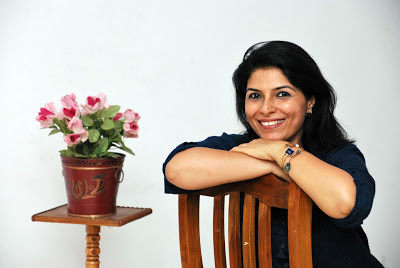 Anubha George propagates the little-known yin yoga
Anubha George propagates the little-known yin yoga Photos by K. Shijith
By Shevlin Sebastian
The hall, at 'Me Met Me', in Panampilly Nagar, Kochi, is in semi-darkness. At one corner, against the wall, there are a row of muted lights. There is a wooden table nearby. Just in front of it, on the mat-laden floor sits Meeta Kurian (name changed). Hovering next to her is yoga instructor Anubha George.
“The posture which we will be doing is called the reclining butterfly,” says Anubha. “For this, we need a prop, like a bolster.” Anubha then places one behind Meeta. Thereafter, Meeta lies down, her back on the bolster. Then, she extend her legs in such a way that the soles of her feet are pressed together.
“This posture is a hip-opener,” says Anubha. “It is great for your menstrual cycle, especially if it is irregular. This posture allows us to breathe more deeply, so we can inhale into the belly and then let out a long, and soft exhale.”
Anubha is a proponent of a lesser known yoga called yin. It has elements of Hatha yoga, Taoism, and western science. Asked the difference with other systems, Anubha says, “In most yoga practices, you move from one posture to another. This is a yang way to do things. That suits most of us fine. Because the mind likes to move from one thing to another. But yin is softer, deeper, and a slower way of doing yoga.”
You are in one posture, from two to five minutes, depending on which asana you are doing. The best aspect is that it helps your mobility. “Your connective tissues, joints and ligaments become stronger,” says Anubha. “And the reason is because you are holding a posture so much longer.”
Her students agree. Freelance IT consultant Pallavi Sharma says. “There are parts of the body that are very stiff. Thanks to yin yoga, all these are stretched out and the flexibility of the body is enhanced. You begin to feel a lot more relaxed as well as lithe. At night, you get a good sleep.”
Interestingly, many sportsmen use yin yoga. “In their profession, their muscles are used so much,” says Anubha. “So, this stretching helps in lengthening their careers.”
Anubha came across yin yoga in England more than ten years ago. She had gone there, following her marriage to Dr. Sanju George, a psychiatrist, whom she met and fell in love when both were in Bangalore. Interestingly, Anubha is from Rajasthan.
In England, Anubha worked in BBC Radio 1. However, recently, the couple, with their children, five-year-old Rahul, and two-year-old Juhi, relocated to George's home town of Kochi. And the move has been good for Anubha. Simply put, she loves Kochi.
“I don't want to live anywhere else in India now,” she says. “I love the people, the place, food and the weather. The people are shy, but welcoming, and they take you in. My parents also love Kochi. They come three to four times a year.”
Meanwhile, apart from her yin yoga classes, Anubha is also a guest lecturer, in journalism and communications, at the Sacred Heart College of Communication. She also teaches a radio module at a journalism school in Kottayam. Her husband, on the other hand, works as a consultant in Rajagiri Hospital at Aluva.
“Life is good,” says Anubha.
(The New Indian Express, Kochi and Thiruvananthapuram)
Published on February 08, 2017 22:57
February 7, 2017
When A Cow Gave Birth
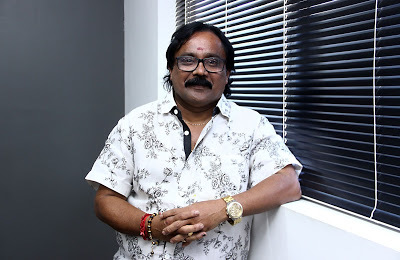 COLUMN: LOCATION DIARY
COLUMN: LOCATION DIARYProduction controller Aroma Mohan talks about his experiences in the films, 'Thinkalazcha Nalla Divasam', 'Commissioner', and 'Oru CBI Diary Kurippu (Jagratha)
Photo by Melton Anthony
By Shevlin Sebastian
For 'Thinkalazcha Nalla Divasam' (1985), director P. Padmarajan made an unusual request. He wanted a cow to give birth during the shoot of the film. The aim was to show the pain of childbirth.
Poojappura Radhakrishnan, who was an assistant to Padmarajan, was given the responsibility. “Somehow he managed to locate such a cow,” says production controller Aroma Mohan. “He checked with a veterinary doctor who confirmed that it was nine months pregnant. Like human beings, they also give birth in the ninth month.”
The cow, with black and white skin, was brought to the location at Pravachambalam, in Thiruvananthapuram. “Padmarajan insisted that whatever time the cow gave birth, the entire crew should be present,” says Mohan. “After every day's shoot, we made sure a security guard kept watch, so that he could inform us in case the labour pains began.”
One day, in the afternoon, the news came that the cow was on its way to giving birth. The crew immediately gathered around. “Padmarajan shot the entire sequence, lasting four hours,” says Mohan. “He used up 800 feet of film, but, in the end, showed only a few minutes on the screen.”
In the film, Kaviyoor Ponnamma plays the matriarch, who lives in a large bungalow. Her children, played by Karamana Janardanan Nair, Mammooty and Ashokan, have plans to sell the house. “So, that was the significance of the calf's birth,” says Mohan. “Padmarajan wanted to show that children forget the pain that a mother undergoes on behalf of them.”
Meanwhile, in the script, for the film, 'Commissioner' (1994), scriptwriter Renji Panicker wrote this line: 'In front of the Thiruvananthapuram University College, there should be a lathi-charge.'
More than a thousand junior artistes were roped in. There were actual policemen, from the special armed police camp, at Peroorkada, as well as make-believe ones. A Circle Inspector (CI) also wanted to take part. “I told him that if he could stand a little distance away, as we had placed several dust bombs at different places,” says Mohan. “He said, 'I have seen so many actual bombs bursting, so what is a dust bomb?'”
Soon, the shooting began. All the bombs burst, on schedule. There was dust all around. The next thing Mohan noticed was the CI looking completely black, because he was covered with dust, from top to bottom. The unit members panicked. They decided to take him to the Medical College Hospital.”
“After a check-up, the doctors confirmed that he was not injured at all,” says Mohan.
But the shoot came to a halt. And it needed the intervention of K. Karunakaran, the then chief minister, to enable the crew to do the shoot on another day.
At the Vismaya studio, at Giri Nagar, Kochi, Mohan pauses, and sips a cup of coffee, before he launches on his next tale. “For 'Oru CBI Diary Kurippu (Jagratha)', there is a scene where murder suspects are standing in rows for an identification parade on an open ground,” says Mohan.
The climax needed to be finished in one day. Director K. Madhu felt tense. But Janardhanan, Jagathy and the other actors seem to be laughing at some joke. Jagathy had a cloth packet in his hand. Madhu looked at them and shouted, “Silence.”
Jagathy quickly gave the cloth packet to Janardhanan, who took it instinctively.
When Madhu spotted the packet, he got very angry with Janardhanan, as it was not relevant to the scene. But Jagathy kept a straight face. However, in the evening, when the shoot was over, Jagathy went to Madhu and confessed that the packet belonged to him. The director gave a knowing smile.
(The New Indian Express, Kochi, Thiruvananthapuram and Kozhikode)
Published on February 07, 2017 22:05
February 6, 2017
Like Father, Like Son
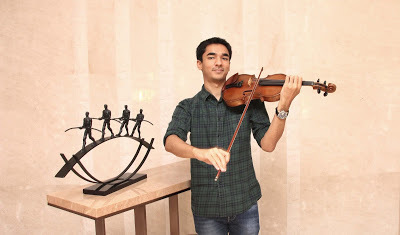 Ambi Subramaniam, the son of the legendary violinist L. Subramaniam, is a worthy heir
Ambi Subramaniam, the son of the legendary violinist L. Subramaniam, is a worthy heirPhoto by Albin Mathew
By Shevlin Sebastian
At the lobby of the Crowne Plaze hotel, Kochi, on a recent Tuesday afternoon, Ambi Subramaniam takes out his violin and places it very delicately, like as if it is a new-born baby, on a low glass-topped table. “You can understand that this is very precious to me,” he says.
There is a story behind the violin. Years ago, his father, the acclaimed violinist L. Subramaniam was doing his master's at the California Institute of the Arts in Santa Clarita, USA. One day, when he was walking down a road, he spotted a violin, with a dislocated back, hanging from the ceiling of a music shop.
“Somehow, he got the feeling it could be a good instrument,” says Ambi. Since it was in bad shape, the shop-owner sold it to L. Subramaniam for a mere $100 (Rs 900 at that time).
“Thereafter, Appa fixed it and started playing it for years,” says Ambi. “But now I use it. This is a 1731 violin made by the famous Italian violin-maker Carlo Ferdinando Landolfi. The more you play, the better is the sound and the more valuable it becomes.”
Ambi had come to Kochi to give a two-hour solo performance at the invitation of the Gosri Gana Sabha. Asked whether he has butterflies in his stomach, the 25-year-old says, “My advantage is that I started so young, so I always feel confident on stage. But after a point you realise that it is not really in your control. You practice, you do your best, but you cannot predict what happens on stage.”
Indeed, there are unexpected reactions. Once in Durban, South Africa, while performing, with his father, during the One World Music Festival, in 2007, there was a very vocal audience. “Before us, there was a well-known Brazilian guitarist, so everybody was dancing, and the adrenalin was flowing,” says Ambi. “When we came on, we started with classical Indian music. Amazingly, they started whistling during the alaap!”
In contrast, at the Radio Hall, in Warsaw, Ambi played for half an hour and got no response. “Everybody was silent,” he says. “But when I finished, they gave me a standing ovation. That is their style. They don't want to disturb the artiste.”
Asked about the charms of the violin, Ambi says, “It is one of the most versatile and adaptable instruments. That is why it is used from Carnatic to Western. The violin is everywhere.”
And Ambi is also everywhere, performing all over the world. Of course, his father has played a powerful influence on his life. “He is my guru and a legend in his own right,” says Ambi, who lost his mother when he was only three years old. “The highest point in my life occurred in Lille, France, in 2007, when Appa and I did a performance together. At night when we returned to the hotel, Appa looked at me, held my hand, and said, ‘Now you are a musician’.”
(Sunday Magazine, The New Indian Express, South India and Delhi)
Published on February 06, 2017 00:13
February 1, 2017
The Joyful Search For Beauty
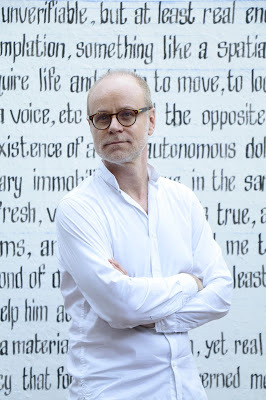
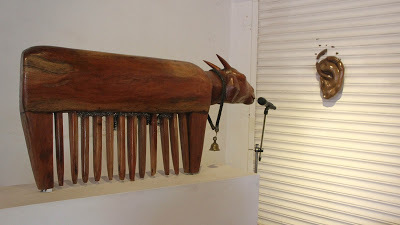 European art collector Frédéric de Goldschmidt talks about the pleasures of art, as well as his experiences at the Kochi Muziris Biennale
European art collector Frédéric de Goldschmidt talks about the pleasures of art, as well as his experiences at the Kochi Muziris BiennalePhotos: Frédéric de Goldschmidt. 'Think About Yourself', a work by Lokesh Yadav. Photo by Albin Mathew
By Shevlin Sebastian
Lokesh Yadav, a student artist from Chhattisgarh, is going to get a shock. One of Europe's noted art collectors, the Brussels-based Frédéric de Goldschmidt, has expressed an interest in acquiring his work. “It is an imaginative work,” says Frédéric.
The art work, 'Think About Yourself', has been displayed at the Students Biennale at Mattancherry. It represents a sheep in the form of a comb. “The sheep is talking to a microphone,” says Frédéric. “I liked the sense of individuality which is conveyed by this solitary sheep, who wants to be heard by the herd.”
This work, by Yadav, is part of the 465 works by students of 55 art schools from across the country. “I was very impressed by the works of the Indian students,” says Frédéric. “Since they are all studying art, I hope they will be able to make a living out of it.”
But to do that, these talents have to be recognised by their peers and the art market. “Unfortunately, many artistes go unrecognised,” says Frédéric. “And so, I am concerned about their future prospects.”
Interestingly, Frédéric became aware of the Kochi-Muziris Biennale only a couple of months ago. “I saw a few photos, on Instagram, and found it interesting. I decided to come since I had been invited to the India Art Fair at New Delhi. So I decided to combine the two.”
And Frédéric is impressed. “The Kochi Biennale is rough, not polished. But this is a Biennale with a soul. It has life,” he says. “Fort Kochi is a wonderful place. And the theme, 'Forming in the pupil of the eye' and the locations work very well together.”
It reminded Frédéric of the Havana Biennale, which took place in May, 2015. “The Havana Biennale was wonderful because, like Kochi, there was a nice link between the place and the works,” says Frédéric. “This was also the case in some of the locations of the Istanbul Biennale (2015).”
Meanwhile, at Kochi, Frédéric has been impressed by the works of Dia Mehta Bhupal and Prabhavathi Meppayil (both of India), Alex Seton (Australia), Yael Efrati (Israel), and Alicja Kwade (Germany). “But I don't think I will be acquiring any of their works, since they don't need the recognition and support, as much as the students,” he says.
On an average, Frédéric acquires dozens of art works every year. Asked the basis of his decision-making, Frédéric says, “I follow my intuition. A work has to hit me emotionally. It should also be aesthetically satisfying, and conceptually strong.”
Interestingly, Frédéric does not have a favourite contemporary artiste. “Every artiste in unique,” he says. “The beauty of art is in its variety. You get into the soul of someone through his work. You can admire his craft and intelligence. This will be different from one artiste to the other.”
But the art collector has a favourite among the Dutch masters of the 17th century: Pieter Jansz Saenredam (1597-1665). “He is a wonderful artiste,” says Frédéric. “His works, mostly on the interiors of churches, are beautifully made, and peaceful. You can look at them again and again and never feel tired.”
As a person, who is always interacting with artistes, Frédéric is best suited to describe their character. “Some artistes are friendly,” he says. “A few are aloof. Some want to be in the limelight, while others like to stay away. Some want to show off, but there are artistes who like to be discreet. There are as many characters among artistes, as there are among regular people.”
(The New Indian Express, Kochi and Thiruvananthapuram)
Published on February 01, 2017 20:50
January 31, 2017
A Debut At A Newspaper Office
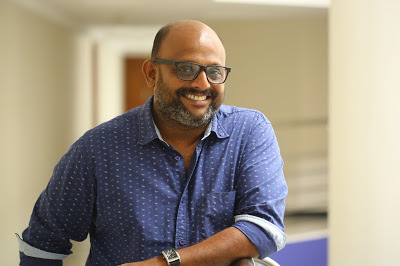
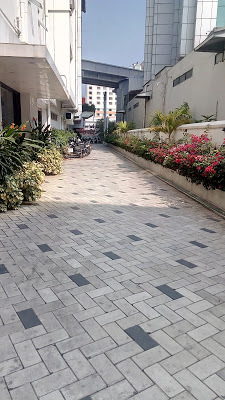 COLUMN: LOCATION DIARY
COLUMN: LOCATION DIARY Director Jibu Jacob talks about his experiences in the films, 'Aayushkalam', 'Stop Violence', 'The Guard' and 'Narayam'
Photos: Jibu Jacob; entrance to the New Indian Express, Kochi
By Shevlin Sebastian
One day, in early 1992, Jibu Jacob stood at the entrance of the long corridor, leading to the New Indian Express, at Kaloor, Kochi. He took a deep breath, and began walking with cinematographer Salu George. It was his first day in Mollywood. On the third floor, in an open space, a hospital set had been constructed. This was for Kamal's film, 'Aayushkalam'.
“I saw [actors] Jayaram and Mukesh sitting around,” says Jibu. “I had only read about these stars and seen them on the screen. But now I was seeing them in the flesh. I felt very nervous. But Salu Chettan calmed me down. Looking back, this is one of the reasons why I will never forget the 'New Indian Express'. It was the place where my career began.”
Jibu's solo cinematography career began with 'Stop Violence' (2002). For an action sequence, the shooting was done on MG Road, Kochi, while hiding the camera from view. “So the people did not know that a shoot was going on,” says Jibu.
Two groups of actors, one of which was led by Vinayak, were fighting each other. Blows were exchanged. A few people began running away. It was one continuous shoot. “Suddenly, the bystanders began to interfere,” says Jibu. “They thought it was an actual fight taking place. We had to immediately bring the shoot to an end. And it took us quite a while to convince the people it was not an actual fight.”
Meanwhile, what Jibu experienced at the location of the film, 'Guard', which starred the late Kalabhavan Mani, was an actual experience. One day, the shoot concluded early, at the Parambikulam Wildlife Sanctuary, at Palakkad. So Jibu, along with his colleague, Sreejith, got onto the jeep. As they travelled, in the distance they saw a herd of elephants. So, they stopped to observe the animals. “The driver, however, warned us to be careful,” says Jibu. “Elephants can get aggressive, especially, if there are calves in the herd. As we continued staring, two elephants started charging towards us.”
The panicked trio ran back to the jeep. But the driver, because of fear and nervousness, could not start the vehicle. He kept trying, but the jeep would not start. Jibu looked back. The elephants were getting closer and closer. Jibu and Sreejith shouted, “Come on, hurry up!” And, after a few agonising seconds, the jeep came to life, the driver pressed their accelerator, and they were able to make their escape. “It was a close shave,” says Jibu.
The director also had a close shave while working in the film, 'Narayam' (1993). One day, the shooting finished at 3.30 p.m., at the location at Mannur, in Kozhikode. The crew were travelling on a Commander jeep. Jibu sat at the back, with his legs dangling outside.
Near the Feroke bridge, the jeep came to a halt behind a bus at a stop. When Jibu looked out, he saw another bus. So, he pulled his legs back. But as the second bus came down the bridge, somehow, the driver lost control and hit the jeep with full force. Jibu lost consciousness.
When he next opened his eyes, he discovered that he was lying on a bed in the Medical College Hospital at Kozhikode. “But, thankfully, I did not suffer any injuries. I was very lucky,” says Jibu. “But Satish, the art director, who was sitting in the middle, received the full impact. His spine got damaged. Unfortunately, he was bed-ridden for two years.”
(The New Indian Express, Kochi, Thiruvananthapuram and Kozhikode)
Published on January 31, 2017 21:17
January 26, 2017
A Mirror To Your Different Selves
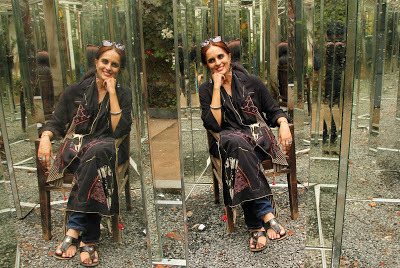
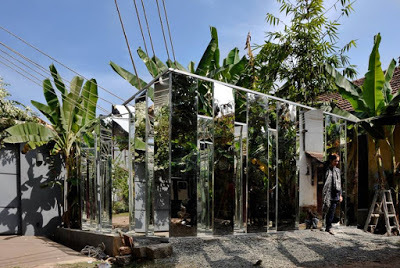 The installation, 'Reflecting (on) The Inhabited Crossroads', by The Hashtag#Collective, makes you look into yourself and wonder which is the real you
The installation, 'Reflecting (on) The Inhabited Crossroads', by The Hashtag#Collective, makes you look into yourself and wonder which is the real youPhoto of Parvathi Nayar by Albin Mathew
By Shevlin Sebastian
Roy Edwards, 58, from Perth, Australia, steps into the mirrored installation called, 'Reflecting (on) The Inhabited Crossroads', at the OED Gallery at Mattancherry. As he walks through a small maze, he sees himself from different angles, thanks to the 60 double-sided mirror panels that have been put up.
At the centre is a chair. Roy sits down and observes himself once again. Later, he tells artist Parvathi Nayar, “It made me realise the kind of faces that we put on, in front of society. I am smiling but, suddenly I see, from a reflection in the corner, that my smile is slipping.”
Another elderly woman says, “It is very disturbing to see these multiple selves. After a while, you don't know what is real and what is not.”
One eight-year-old boy tells Parvathi, “Aunty, it is a nice playground.”
Parvathi smiles as she recollects the memories. “The mirrors follow the design of the naalukettu house,” she says. “It is built around a quadrangle. When you navigate the maze, you can get confused. You don't know which mirror turns and which does not. By the time you come to the chair, at the centre, it is a place of stability, which resembles the middle of the house.”
It took over a week to put up the panels. “They were made elsewhere in Mattancherry, and brought here,” says Parvathy. “There were a team of workers who put up the metal framework. We were also helped by architecture students, as well as photographers. Then we had the lighting designer, Ranjith Kartha, do the lights in the inner square. In the night, when you walk through, you are moving from darkness to the light.”
There are other subtle messages, too. “Because of urbanisation, we are all trying to come to terms with what to keep and what to give up,” she says. “There is also the larger tussle, between modernity and the past, the new and the old. To each of us, it is a matter of confusion: what do we retain, and what do we give up.”
This project, on display till March 28, is placed in a collateral space of the Kozhi Muziris Biennale. And it has been set up by The Hashtag#Collective. Apart from Parvathi, the other members are the Chennai-based architect Biju Kuriakose, and Abin Chaudhuri, an industrial designer from Kolkata. “We have our own careers, but we come together to do something creative,” says Biju. In fact, this is the group's first major project.
“One of the collective's ideas is to bring art to the people,” says Biju. “Usually, when you see interactive and experiential art, it is art-centric and esoteric. But what we have put up is art which you can actually experience, remember, and take away.”
Meanwhile, what enriched Parvathi was her interaction with the people who set up the installation, and the many stories that she heard. “Ravi, who helped with the fabrication, told me about his life in Mumbai where he worked in a pharmaceutical company,” says Parvathi. “Then one day he lost his job and had to return.”
Then there was the fisherman Johnson, who had set up the ropes to anchor the installation. “He told me about how his mother kept crying because he drank so much,” says Parvathi. “He also went to so many places to work, but had to come back because of a lack of opportunities. There are so many rich and colourful stories in Mattancherry.”
(Published in The New Indian Express, Kochi and Thiruvananthapuram)
Published on January 26, 2017 21:14
January 23, 2017
Finding The Beauty In Garbage
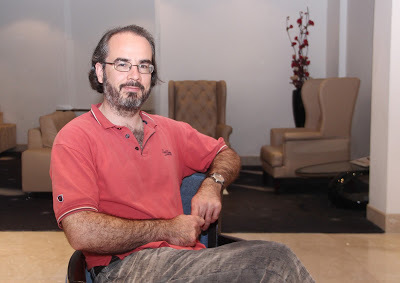
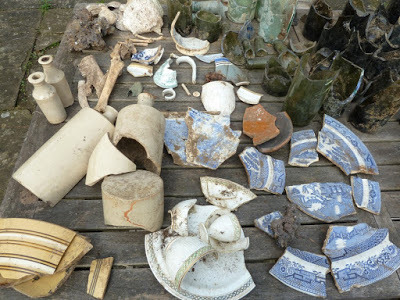
On a recent visit to Kochi, Dr. Tom Licence, from the University of East Anglia, England, spoke about how the concept of throw-away garbage began in England in the 1880s
Photo of Dr. Tom Licence by Melton Antony
By Shevlin Sebastian
“From the beginning of time, the things that people threw away included ceramic items, bones, and ashes from fires,” says Dr. Tom Licence, director of the Centre of East Anglian Studies, at the University of East Anglia, England. “However, in the 1880s, tins, bottles, jars, packets and cartons began appearing. This was the first time people began throwing things away, not because they were broken, but empty. A whole new category of rubbish appeared that did not exist before.”
Tom is running a project, which is investigating this rubbish. “I am interested in rubbish that came from a single household, where the objects could be linked to the members of the household, so that you could use them to tell stories about every-day life,” he says.
One such household belonged to a rector, Francis Kendall, who lived in Hempstead, Norfolk, in east England, with his wife Julia and four children. “At that time, he was earning 500 pounds a year, which was a lot of money,” says Tom.
Tom discovered that, behind their rectory, there was a rubbish pit. “It was obvious from the contents that the Kendalls decided to replace all the plates and cups, with new items,” says Tom.
This desire to upgrade was a new phenomenon in the late 19th century. So, although the plates and cups, which had been left behind by the previous occupant, were perfectly good, wealthy families replaced them just because they could afford to do so. “So, this is the beginning of the throwaway society we have today,” says Tom.
While investigating the waste, Tom came across a pair of cups, which bore the name of John Pike, who lived in Norwich, about an hour away from where the pastor lived. “I was wondering how these two cups, from Norwich, turned up in the rectory,” says Tom. “Maybe, it had been stolen. But that seemed unlikely, since Kendall was a clergyman.”
Research in the local traders' directory revealed that John was a caterer. He and his daughters would go on a wooden cart, and provide drinks and sandwiches to affluent families. They would also provide cups and plates. In 1895, the rector and his family threw a large garden party, according to a report in the local newspaper of that time.
“They had a brass band and invited everybody from the village because they had just moved in,” says Tom. “It seems that, after the party, the caterer's cups got thrown into the rubbish.”
And it was during this era, that one person's garbage became another person's resource. “Everything that was thrown away, in London, like glass, leather, paper, and metal, was brought by barge to Essex,” says Tom. “This was scavenged by the poor.”
Paper and rags were re-sold to paper-makers. Leather could be sold to cobblers, who could use it to repair old shoes.
As a result of his investigations, Tom was able to write a book called, 'What The Victorians Threw Away'. And, on his recent visit to Kochi, Tom addressed the students of the Kerala Council of Historical Research, at Thiruvananthapuram and Pattanam, on the subject. “The audience members were attentive and curious,” says Tom. “I enjoyed the interaction.”
Of course, he also noticed the occasional mounds of garbage in different parts of Kerala. “It is similar to Victorian England,” says Tom. “The throw-away culture has spread all over the world, because of the forces of consumerism and globalisation. To save the planet, we need to change our attitude and learn to recycle and reuse.”
(The New Indian Express, Kochi and Thiruvananthapuram)
Published on January 23, 2017 20:58
January 22, 2017
A Love For All Things Indian
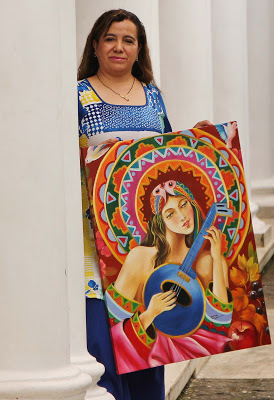
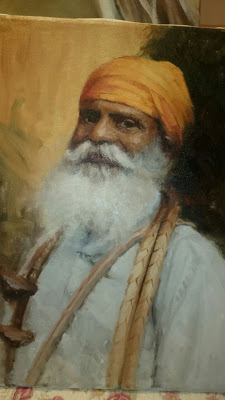 Backgrounder: The Brazilian artist Meri Amanda Calero could barely string two words of English together. So I would type a sentence in English on Google Translate and read out the Spanish version, since she is originally from Ecuador. Then she would reply in broken English and say a Spanish word, with emphasis. Which I would again put on Translate and get the English version. It was fun, but exhausting, for me, as well as local artist Manu, who sat in on the interview.
Backgrounder: The Brazilian artist Meri Amanda Calero could barely string two words of English together. So I would type a sentence in English on Google Translate and read out the Spanish version, since she is originally from Ecuador. Then she would reply in broken English and say a Spanish word, with emphasis. Which I would again put on Translate and get the English version. It was fun, but exhausting, for me, as well as local artist Manu, who sat in on the interview. At a recent exhibition, at Kochi, the Brazilian artist Meri Amanda Calero showcased a couple of her works
Photo by Albin Mathew
By Shevlin Sebastian
A group of visitors crowded around the Brazilian artist Meri Amanda Calero, as she pointed at her painting of an Indian holy man at the Durbar Hall Gallery, Kochi.
The oil on canvas showed a man, with an overflowing white beard, as well as a thick moustache. The eyes and the lips seemed to hint at a smile. A colourful orange turban adorned the head.
“I met this man in Jaipur last year,” she says. “He was a wise man, and deeply spiritual. But I don't know his name. We exchanged smiles and held hands. And I felt inspired enough to do a painting.”
But her second work is completely different. It is of her 15-year-old niece, Sabrina who lives in Ecuador.
In Sao Paulo, where Meri lives as a naturalised Brazilian, she earns her living as a cardiologist. But every now and then she returns to her home country of Ecuador to meet up with her family. And Sabrina served as an inspiration.
The image is of a young girl, with rouge on her cheeks, sensual red lips, but with a distant look in her eyes, playing the mandolin. “She is singing the pasillo, the national music of Ecuador,” says Meri. “The songs are about heartbreaks and nostalgia for the past.”
Meri got the opportunity to take part in the Kochi exhibition when he met a Malayali artist, Manu, at an art event in Delhi last year. “I invited Meri to take part in our 'Worldwide Art Movement' group exhibition,” says Manu. “And Meri readily agreed.”
And, on her first visit, she has a very high impression of Malayalis. “They are happy, relaxed, and have a helping attitude,” she says. “In Kerala and India, a lot of importance is given to art and culture, unlike in Brazil.”
So, Meri says, it is difficult to be a full-time artiste in Brazil. She works on her art in the late evenings or the early mornings, after her regular job. “And as and when I get the chance I come to India,” she says.
Her fascination with the country began when, as a teenager, in Quito, she saw an exhibition of Indian artists. “The colours were so bright and attractive,” says the 40-year-old. “I wanted to immediately come to India.”
But she could only do so in 2013. “I feel very happy when I am in India,” she says. “This is my fifth visit. As an artiste, it is a place that provides me with enormous inspiration.”
However, Brazilian artistes are looking westwards for guidance. “In fact, the biggest influence on them is the American artist Morgan Weistling,” says Meri. “I tell them they should come to India, to become better artistes. But nobody has followed my advice, as yet.”
(Sunday Magazine, The New Indian Express, South India and Delhi)
Published on January 22, 2017 21:04
January 16, 2017
The God Of The Kiln
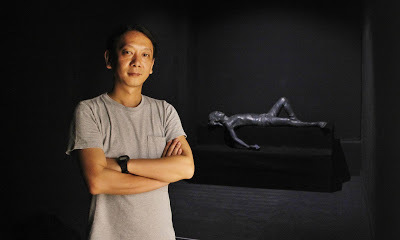 Japanese artist Takayuki Yamamoto recreates a folktale, at the Kochi Muziris BiennalePhoto by Albin MathewBy Shevlin SebastianAs you step into a dark room, at the Aspinwall House, Fort Kochi, at one end, you can see a sculpted figure of a man lying face-up on a platform, with long flowing hair, bare-bodied, with one arm outstretched.Standing next to him in a blue t-shirt and Bermuda shorts is the Japanese artist, Takayuki Yamamoto. In fact, there is a striking similarity between the face of the figure and the artist. “Yes, it is a self-portrait,” says Yamamoto, with a smile.His Biennale exhibit is titled, ‘God of the kiln’. And it is based on a Japanese folktale. There was a childless couple who found a baby on the street. They raised him up. “One day, the boy pricked his belly button, and a golden grain came out,” says Yamamoto. “So the family sold it and became rich. But the grandmother became greedy. So she tried to dig out more grains, and, in the process, the boy died.”The grandfather felt sad. So he made a mask of the boy. In north-east Japan, this mask is placed in the kitchen to protect the people from a fire. “That is how the boy became known as the God of the Kiln,” says Yamamoto.Interestingly, at the exhibit, once a day, a golden ball will pop out of the navel. “After a month, there will be 30 balls on the floor,” he says. “Eventually, 100 will come out. It is based on a computer programme.”Incidentally, the 6' long figure, painted in bronze, is made of fibreglass resin. “It took me a month to make it,” says Yamamoto.The message that he wants to convey is that the world is convulsed with greed. “Greed is the dark aspect of civilisation and modernity,” he says. “Everybody has a greedy nature within himself. But when you indulge in it, it is usually at the cost of somebody else's suffering.”Meanwhile, when asked about his experience at the Biennale, Yamamoto says frankly, “At the start, a lot of things had to be set up. But then everything turned out well. I like the atmosphere and the freedom that artists get in this biennale. That is the advantage when a bienalle is run by artists instead of corporate people.”One night, Yamamoto attended a party on the Fort Kochi beach. “People were dancing and shouting,” he says. “I enjoyed it a lot. In Japan, people are reserved and shy in public.”Yamamoto grew up in Aichi (350 kms from Tokyo). He showed an early inclination for art. Eventually he did his masters in fine art from the Chelsea College of Art and Design, and also studied at the Byam Shaw School of Art, both in Britain. He has done nine solo exhibitions, as well as 40 group exhibitions, in places like Sydney, Melbourne, London, Rotterdam, Edinburgh, Athens, San Francisco, Singapore, and the Netherlands.His works involve portraits and video installations, which mostly involve children. In ‘A Week Of The Animals', a Dutch schoolgirl sings a Russian folk song, while a monkey hovers above her head:On Sunday, I will eat some salad.
Japanese artist Takayuki Yamamoto recreates a folktale, at the Kochi Muziris BiennalePhoto by Albin MathewBy Shevlin SebastianAs you step into a dark room, at the Aspinwall House, Fort Kochi, at one end, you can see a sculpted figure of a man lying face-up on a platform, with long flowing hair, bare-bodied, with one arm outstretched.Standing next to him in a blue t-shirt and Bermuda shorts is the Japanese artist, Takayuki Yamamoto. In fact, there is a striking similarity between the face of the figure and the artist. “Yes, it is a self-portrait,” says Yamamoto, with a smile.His Biennale exhibit is titled, ‘God of the kiln’. And it is based on a Japanese folktale. There was a childless couple who found a baby on the street. They raised him up. “One day, the boy pricked his belly button, and a golden grain came out,” says Yamamoto. “So the family sold it and became rich. But the grandmother became greedy. So she tried to dig out more grains, and, in the process, the boy died.”The grandfather felt sad. So he made a mask of the boy. In north-east Japan, this mask is placed in the kitchen to protect the people from a fire. “That is how the boy became known as the God of the Kiln,” says Yamamoto.Interestingly, at the exhibit, once a day, a golden ball will pop out of the navel. “After a month, there will be 30 balls on the floor,” he says. “Eventually, 100 will come out. It is based on a computer programme.”Incidentally, the 6' long figure, painted in bronze, is made of fibreglass resin. “It took me a month to make it,” says Yamamoto.The message that he wants to convey is that the world is convulsed with greed. “Greed is the dark aspect of civilisation and modernity,” he says. “Everybody has a greedy nature within himself. But when you indulge in it, it is usually at the cost of somebody else's suffering.”Meanwhile, when asked about his experience at the Biennale, Yamamoto says frankly, “At the start, a lot of things had to be set up. But then everything turned out well. I like the atmosphere and the freedom that artists get in this biennale. That is the advantage when a bienalle is run by artists instead of corporate people.”One night, Yamamoto attended a party on the Fort Kochi beach. “People were dancing and shouting,” he says. “I enjoyed it a lot. In Japan, people are reserved and shy in public.”Yamamoto grew up in Aichi (350 kms from Tokyo). He showed an early inclination for art. Eventually he did his masters in fine art from the Chelsea College of Art and Design, and also studied at the Byam Shaw School of Art, both in Britain. He has done nine solo exhibitions, as well as 40 group exhibitions, in places like Sydney, Melbourne, London, Rotterdam, Edinburgh, Athens, San Francisco, Singapore, and the Netherlands.His works involve portraits and video installations, which mostly involve children. In ‘A Week Of The Animals', a Dutch schoolgirl sings a Russian folk song, while a monkey hovers above her head:On Sunday, I will eat some salad.On Sunday, I also get sleepy.
Tula Tula Tula.On Monday, I sleep the whole day,
On Tuesday, I wake up.
Tula Tula Tula.On Wednesday, all the people watch me,
On Thursday I feel happy,
On Friday, I have a look.
On Saturday, you will only see my body.
Yes, my friends, this is my workweek.Tula Tula La.There are also songs involving crocodiles and elephants.“I enjoy working with children, as well as being an artist,” says Yamamoto.(The New Indian Express, Kochi and Thiruvananthapuram)
Published on January 16, 2017 21:49
January 15, 2017
The Feminine Mystique
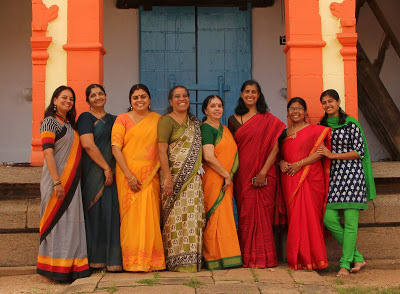
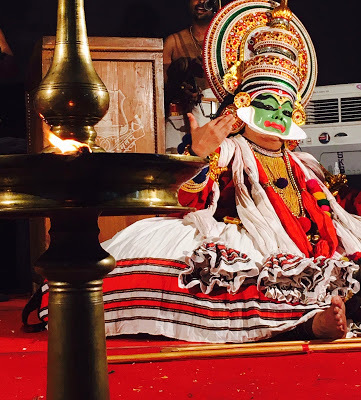 The all-woman Vanitha Kathakali Sangham have been performing the art form for four decades now
The all-woman Vanitha Kathakali Sangham have been performing the art form for four decades now(Sunday Magazine, The New Indian Express, South India and Delhi)
Published on January 15, 2017 22:33



